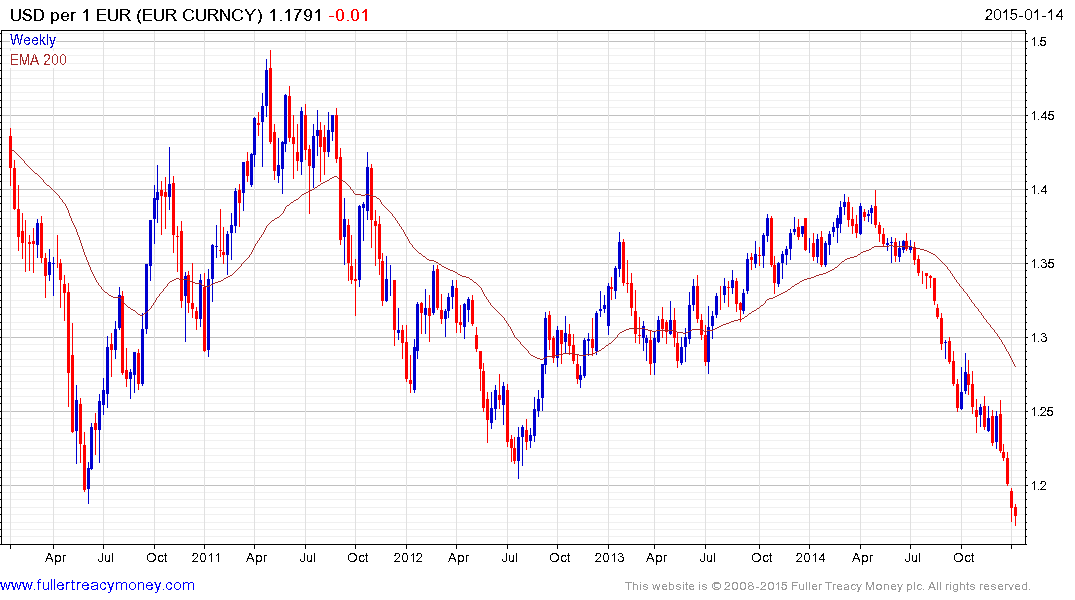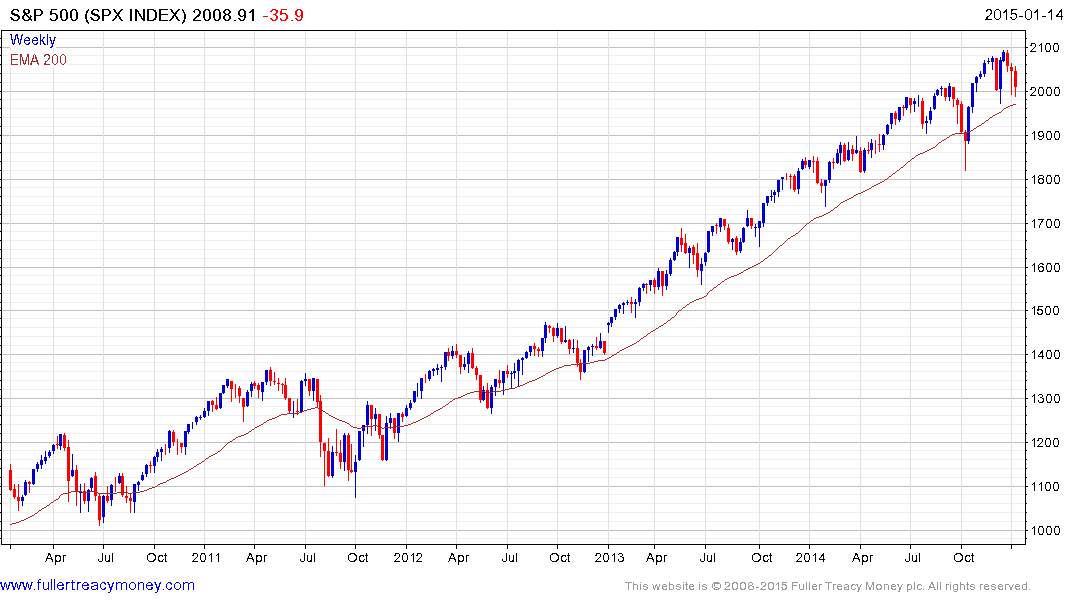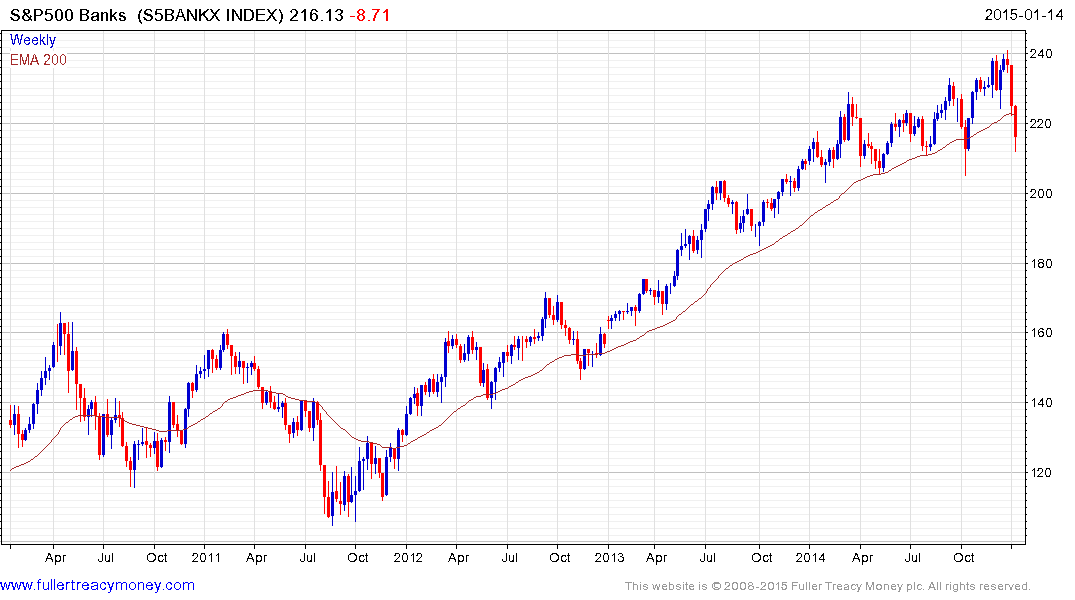US Preeminence
Thanks to a subscriber for this detailed report laying out the case for remaining fully invested in US equities. Here is a section:
Overweight the Dollar: The divergence in growth rates between the United States and the Eurozone and Japan, the resulting divergence in monetary policy and renewed recognition of US pre-eminence are likely to lead to an increase in the value of the dollar relative to the euro and the yen. We believe that this cycle of dollar appreciation is more akin to the 1978–85 and 1995–2002 periods of dollar strength. As shown in Exhibit 30, during these two periods, spanning 6.3 years and 6.8 years, the dollar appreciated 93% and 46% on a trade-weighted basis, respectively. In these periods, the primary driver of the dollar’s strength was the divergence of monetary policy. We expect the dollar to appreciate an incremental 10% or so relative to the euro and the yen over the course of 2015.
We are not projecting a higher level of dollar appreciation because we are not expecting large interest-rate differentials between Treasury securities and German bunds and Japanese government bonds. Furthermore, the US dollar has already risen 24% from its trough in We expect the dollar to appreciate further relative to the euro and the Japanese yen in 2015. April 2011. The most recent appreciation followed statements by ECB President Mario Draghi in November 2014 suggesting more significant measures to prevent the Eurozone from sliding into deflation and by BOJ Governor Haruhiko Kuroda in late October 2014 to increase Japan’s pace of quantitative easing to fight deflation. This divergence of monetary policy can also be seen in the projected balance sheets of the three central banks over the next two years, as shown in Exhibit 31.
The corollary to our view on US pre-eminence and a strong dollar is a negative view on gold. The correlation between gold and the dollar has been -0.36 since 1974. Even though gold has already declined almost 40% from peak levels in September 2011, we believe that gold prices have further downside given declining physical demand, a stronger dollar and rising US interest rates. We recommend a tactical allocation that is designed to benefit from declining gold prices with some downside protection.
Here is a link to the full report.
The reasons for the economic outperformance of the US economy are well understood and include important considerations such as a widening technological lead, lower energy costs and a proactive central bank. While it is correct to state that the Euro has fallen following the announcement of the ECB’s intention to adopt quantitative easing, the end of the Fed’s QE program in October is equally important.

One issue is that these points have been valid for quite some time but are only now being quoted widely in the financial media suggesting much of this news is already in the price. It’s hard to make a bullish case for the Euro but it has already had a big fall. The currency is oversold by any measure one might choose to look at and while it is reasonable to assume the Euro will head lower over the medium-term that need not happen all at once. Potential for some consolidation in the region of $1.20 is increasingly likely.

An additional consideration is that the strength of the Dollar represents a headwind for Wall Street’s overseas earnings which are a meaningful proportion of the total. Elsewhere in the above report the authors quote the risk of a 5% reaction as over 90% and a 10% reaction as around 68% this year. The S&P500 for example has posted a number of 4 and 5% pullbacks over the few years and the October reaction was just shy of 10%. These are modest reactions in a bull market and do not qualify as corrections. Following a particularly consistent medium-term trend between 2012 and late 2014 the larger reaction may be the beginning of a softening up phase ahead of a larger pullback.
The point I made in yesterday’s piece is that while the Index subsequently rebounded from the October low, volatility did not fall back to its previously depressed level. This suggests the potential for a much choppier environment than investors have been used to has increased substantially.

The underperformance of the S&P500 Banking Index is an additional headwind suggesting that the presumed health of the domestic economy may not be as strong as currently envisioned.
Back to top


